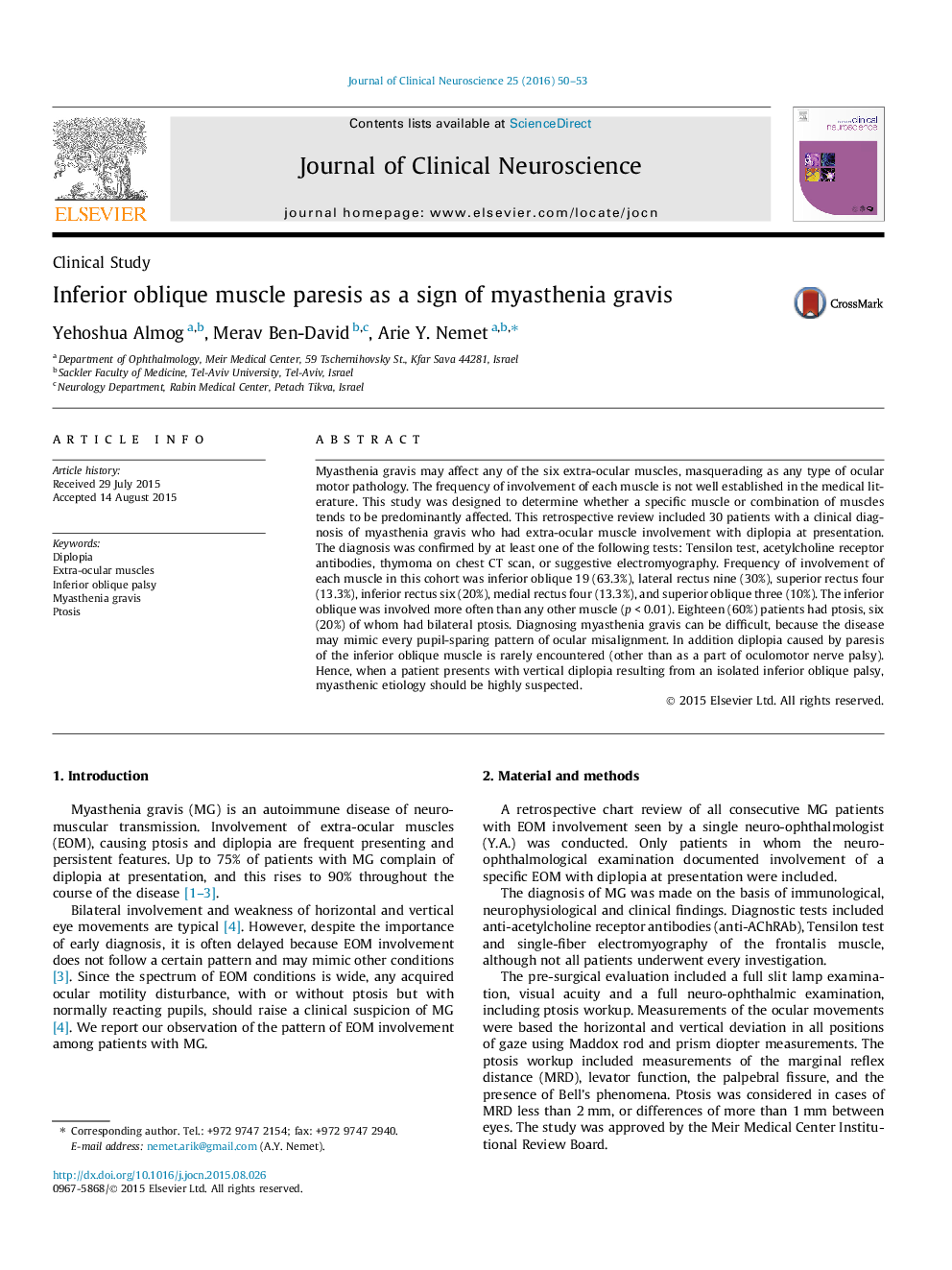| کد مقاله | کد نشریه | سال انتشار | مقاله انگلیسی | نسخه تمام متن |
|---|---|---|---|---|
| 3058538 | 1580291 | 2016 | 4 صفحه PDF | دانلود رایگان |
کلمات کلیدی
1.مقدمه
2. مواد و شیوه ها
2.1. تحلیل آماری
3. نتایج
3.1. گزارش مورد نمونه
4. بحث
جدول 1. جزئیات بالینی و جمعیتی بیماران مبتلا به گراویس میاستنی.
5. نتیجه گیری
Myasthenia gravis may affect any of the six extra-ocular muscles, masquerading as any type of ocular motor pathology. The frequency of involvement of each muscle is not well established in the medical literature. This study was designed to determine whether a specific muscle or combination of muscles tends to be predominantly affected. This retrospective review included 30 patients with a clinical diagnosis of myasthenia gravis who had extra-ocular muscle involvement with diplopia at presentation. The diagnosis was confirmed by at least one of the following tests: Tensilon test, acetylcholine receptor antibodies, thymoma on chest CT scan, or suggestive electromyography. Frequency of involvement of each muscle in this cohort was inferior oblique 19 (63.3%), lateral rectus nine (30%), superior rectus four (13.3%), inferior rectus six (20%), medial rectus four (13.3%), and superior oblique three (10%). The inferior oblique was involved more often than any other muscle (p < 0.01). Eighteen (60%) patients had ptosis, six (20%) of whom had bilateral ptosis. Diagnosing myasthenia gravis can be difficult, because the disease may mimic every pupil-sparing pattern of ocular misalignment. In addition diplopia caused by paresis of the inferior oblique muscle is rarely encountered (other than as a part of oculomotor nerve palsy). Hence, when a patient presents with vertical diplopia resulting from an isolated inferior oblique palsy, myasthenic etiology should be highly suspected.
Journal: Journal of Clinical Neuroscience - Volume 25, March 2016, Pages 50–53
